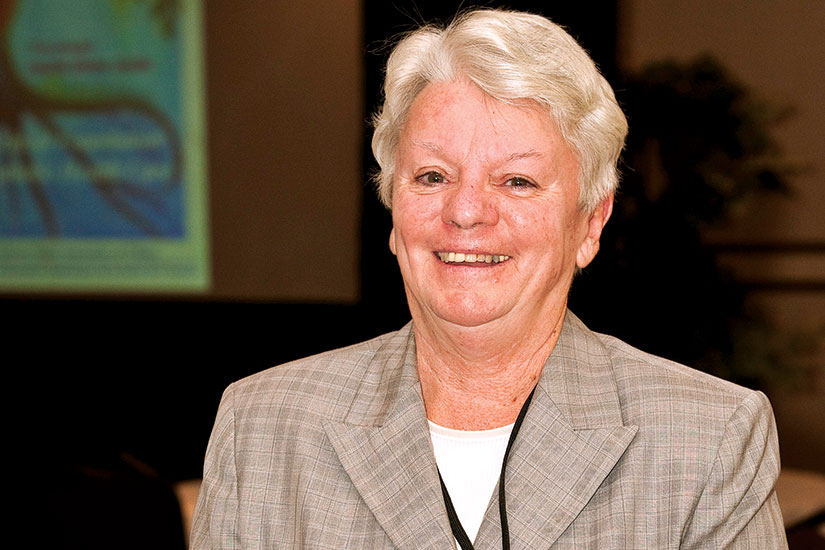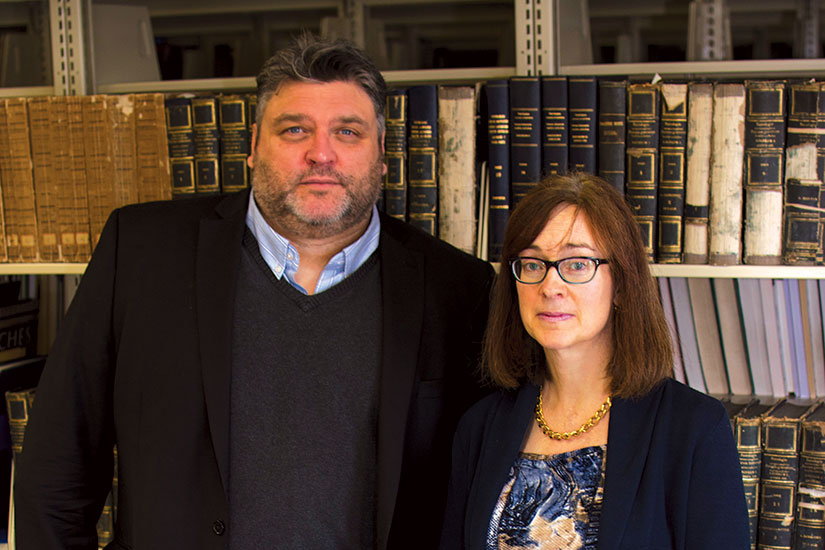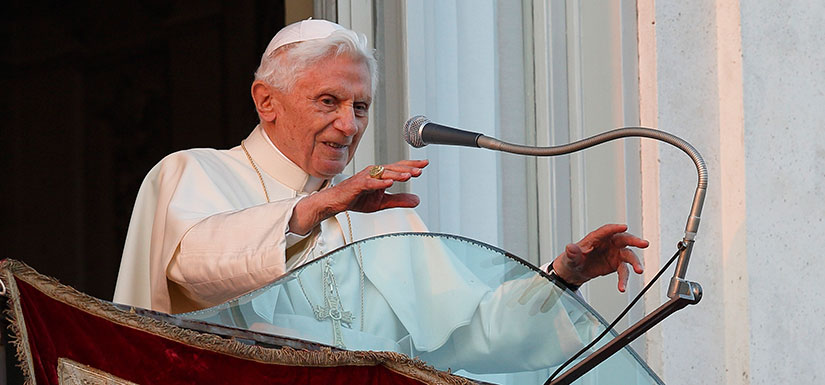Halifax’s plain-spoken bishop spoke those words in 2009 when he was faced with a hydra’s head of media microphones asking how he reacted to news that Antigonish Bishop Raymond Lahey had been stopped at the border with a trove of child-porn images and videos on his laptop.
Nothing has wounded the Church more deeply nor threatened the faith of individual Catholics more certainly than the sad, brutal parade of child sexual abuse revelations that began with the Mount Cashel Orphanage stories in 1989. It started in St. John’s, Nfld., but almost immediately became a global story about pure evil covered up and shoved aside by bishops and Church bureaucrats over generations.
Decades later, Catholics are still trying to comprehend how priests could abuse minors and to understand the Church’s unsatisfactory response.
“We are 30 years since the public revelations of this stuff,” said Sr. Nuala Kenny. “Why is it that as the Church of Jesus Christ we have not been able to get at the heart of the matter?”
Kenny has spent half her adult life on the question. She was part of the original archdiocesan commission of inquiry in St. John’s in 1990. She helped Canada’s bishops write “From Pain to Hope” in 1992, the world’s first set of guidelines and policies issued by a national bishops’ conference. She is the author of the 2012 book Healing the Church, which brought her insights as a medical doctor and professor of medicine to the pathology of sex abuse inside the Church.
Over the past four years she has worked on a major revision of “From Pain to Hope” tentatively titled “Moving Towards Healing and Renewal — The Canadian Experience.” The text for these new guidelines was approved at last September’s national plenary meeting of bishops and was scheduled to be published in the first half of 2017. Delays in translation and editing have put it off until the fall.
Kenny’s conviction that the Church needs a more public and much deeper conversation about abuse was reinforced earlier this month when her friend Marie Collins resigned as a member of Pope Francis’ Pontifical Commission for the Protection of Minors. Collins cited frustration with Vatican officials who were averse to accepting suggestions or providing resources or support for the commission.
 Sr. Nuala Kenny can’t believe that after 30 years looking into it, the Church still hasn’t gotten to the heart of the matter when it comes to clerical sex abuse. (Photo by Michael Swan)
Sr. Nuala Kenny can’t believe that after 30 years looking into it, the Church still hasn’t gotten to the heart of the matter when it comes to clerical sex abuse. (Photo by Michael Swan)
“Despite the Holy Father approving all the recommendations made to him by the Commission, there have been constant setbacks,” Collins wrote in a March letter. “This has been directly due to the resistance by some members of the Vatican Curia.”
Kenny greeted the resignation with tears. She wants Catholics talking about the conditions, the clerical culture, the reasons why child sexual abuse flourished like a metastasizing cancer inside the Church.
“What are the underlying, systemic and cultural beliefs and practices that allowed the crisis to go on as it did with such inept, insensitive response?” she asks.
Popes have been acknowledging the scope of of the problem since 2001. The slowly shattering dream of the Church as sanctuary for the innocent broke the heart of Pope St. John Paul II, who finally declared: “It has been very damaging in the life of the Church and has become an obstacle to the Gospel…. Sexual abuse within the Church is a profound contradiction of the teaching and witness of Jesus Christ.”
In 2014 Pope Francis personally asked for forgiveness from abuse survivors.
“We will not take one step backward with regards to how we will deal with this problem, and the sanctions that must be imposed,” Francis told the survivors.
Kenny and her team — theologian David Deane and business ethics professor Cathy Driscoll — are convening a conference at the Atlantic School of Theology in Halifax on April 22 that is a starting point for a wider examination of abuse issues which will likely result in a book. The conference’s title lays out the direction — “Healing the Body: Church Renewal in Response to the Sexual Abuse Crisis.”
“The answer that it’s just one person’s personal sin and there’s nothing wrong with this perfect society that the Church is — that’s a crock,” explains Deane.
“Clergy sexual abuse is just one symptom of a much bigger problem, which is a cultural problem,” said Driscoll. “There’s individual moral failure in the leadership, but the failure is the product of a broken culture.”
Driscoll teaches at the Sobey School of Management at St. Mary’s University and Deane is a systematic theologian at AST. On the one hand, Driscoll brings insights into how organizations create conditions for moral failure, from Enron’s faked energy markets in the 1990s to Volkswagen’s cheating on exhaust quality tests in 2015. On the other, Deane has thought deeply about ecclesiology — the spiritual structure and destiny of the Church.
But it’s Kenny’s medical mind that sets the tone. All three talk about the pathology of a sick soul at large within the Church.
“What we’re focussed on is the cover-up. What we’re focussed on is why bishops in particular saw the need to protect the brand rather than see Christ in and as the victims,” Deane said.
Insufficient answers abound, as both liberal and conservative Catholics have used the scandal as ammunition in their private culture war.
 Theologian David Deane and business ethics professor Cathy Driscoll, along with Sr. Nuala Kenny, will host a conference in Halifax next month as a starting point for a wider examination of abuse issues. (Photo by Chantal Davie)
Theologian David Deane and business ethics professor Cathy Driscoll, along with Sr. Nuala Kenny, will host a conference in Halifax next month as a starting point for a wider examination of abuse issues. (Photo by Chantal Davie)
“We have been living in a polarized Church,” said Deane. “Because of this, Catholic culture has been ill suited to responding to the problem. The reason for that is the conservative Catholic culture tends to be defensive — siege mentality — and absolutely opposed to the notion of reform, and sees all critique as an attempt to assail and overthrow (the Church). Liberal Catholic culture has been liberal, and that’s part of the problem. It fails to see that some of the problems within the Church are problems that are manifest in late-modern, secular philosophical and ideological culture.”
So if the liberal answer is that we need more democracy — locally elected bishops, open synods, married priests, less Rome more home — then liberals have to explain how a Church that “looks more like Belgium” actually changes how people behave or gets us closer to the open, wounded and sacred heart of Jesus, Deane said.
“I don’t want you voting in your parish about something if you don’t have the mind of Christ,” said Kenny.
If more democracy gives the Church more politics, more campaigning for particular interests, how does that change the role of secrecy and the alluring power of holding and keeping secrets?
So far the Church’s main response has been to reform canon law and increase the levels of policing, assuring everyone that bishops and priests will be held accountable. Deane is adamant that such measures are necessary and no effort should be spared in uncovering and punishing crimes and criminals.
“We need to do that. That’s something the Church is working on, has been working on, and needs to get. And that’s just non-negotiable,” he said.
But prompt, public laicisation and reporting to police is symptom treatment. Kenny, Deane and Driscoll are asking questions about the disease itself.
“This is our Church not being the Church of Jesus Christ. We’re all complicit. So how did we get that way?” Kenny asks. “We can treat symptoms. And that is going to potentially kill the patient if we don’t recognize that it’s symptom relief and we don’t go to the deep pathology.”
In one of the lowest moments in the painful history of clerical sexual abuse Vatican secretary of state Cardinal Tarcisio Bertone demonstrated just how a legalistic mindset works when he refused to co-operate with the Irish inquiry into sexual abuse by invoking diplomatic immunity.
“My interest is primarily on how the Church has failed to be what Jesus Christ calls us to be and therefore has failed to be a transformative presence in the world,” said Deane.
“How could a bishop in fact not understand that when a mother and a father were before him with a 12-year-old who vividly describes being raped, that his heart wasn’t torn out with compassion and also the righteous indignation that Jesus showed when people harm children?” asks Kenny. “The question for me is why? Why the denial, ongoing denial? They are theological and ecclesiological questions.”
 Pope Benedict XVI issued a full apology to victims of clergy sex abuse in 2008. (CNS photo/Paul Haring)
Pope Benedict XVI issued a full apology to victims of clergy sex abuse in 2008. (CNS photo/Paul Haring)
Abuse and the Church: a timeline
Some significant events involving sexual abuse in the Church:
1974: Allegations of sexual and physical abuse at Mount Cashel Boys Home in Newfoundland.
1975: Police investigate Christian Brothers operating Mount Cashel … Several brothers implicated, but no charges laid.
1981: Accusations of sexual abuse of children mount in U.S., including one priest in Wisconsin admitting to abusing 200 boys.
1989: Royal Commission appointed to investigate the justice system’s handling of Mount Cashel case. By 1994, nine Christian Brothers are convicted on abuse charges.
1991: Bishop Hubert O’Connor of Prince George, B.C., resigns after sex abuse charges on incidents dating back to 1960s. He’s convicted in 1996.
1992: Canadian bishops issue From Pain to Hope, the first statement on clerical sex abuse by a national bishops’ conference.
1998: Leader of the Legionaries of Christ in Mexico, Marcial Maciel, is investigated by the Vatican after nine men complain of abuse. He is not prosecuted, but eight years later is finally forced to resign by Pope Benedict XV.
2002: In the face of mounting cases of sex abuse cases against priests, Pope John Paul II calls emergency meeting with U.S. cardinals. Later, U.S. bishops adopt the “Charter for the Protection of Children and Young People.”
2003: Ontario court awards about $16 million to 83 victims in Mount Cashel case.
2004: Report commissioned by the U.S. Conference of Catholic Bishops reveals more than 10,000 people alleged child sexual abuse against priests between 1950 and 2002.
2008: Pope Benedict XVI issues a full apology to victims of sex abuse by priests.
2009: Diocese of Antigonish in Nova Scotia pays $15 million to settle lawsuit involving incidents of abuse dating to 1950s. Three years later, the bishop, Raymond Lahey, is defrocked after being charged and convicted of possessing child pornography.
2014: Pope Francis establishes Pontifical Commission for the Protection of Minors.
2015: De-frocked priest Eric Dejaeger sentenced to 19 years for dozens of sex crimes committed while he was priest in Nunavut from 1978-82.
2016: Charges laid against retired priest Barry McGrory, who admitted to sexually abusing young people at his Ottawa parishes in the 1970s and ’80s.
2017: Australia’s royal commission into institutional abuse reveals Catholic Church paid $275 million in compensation to 3,066 victims of child abuse victims since 1980.


